When it comes to losing weight, it seems like every discussion comes back to counting calories. It’s definitely true that counting calories as a principle does work. However, the implementation often can be stressful, anxiety-inducing, and feel quite unnatural. So how do we lose weight without feeling like we are on an overly restrictive diet? Let’s go through six main ways you can lose weight without counting calories.
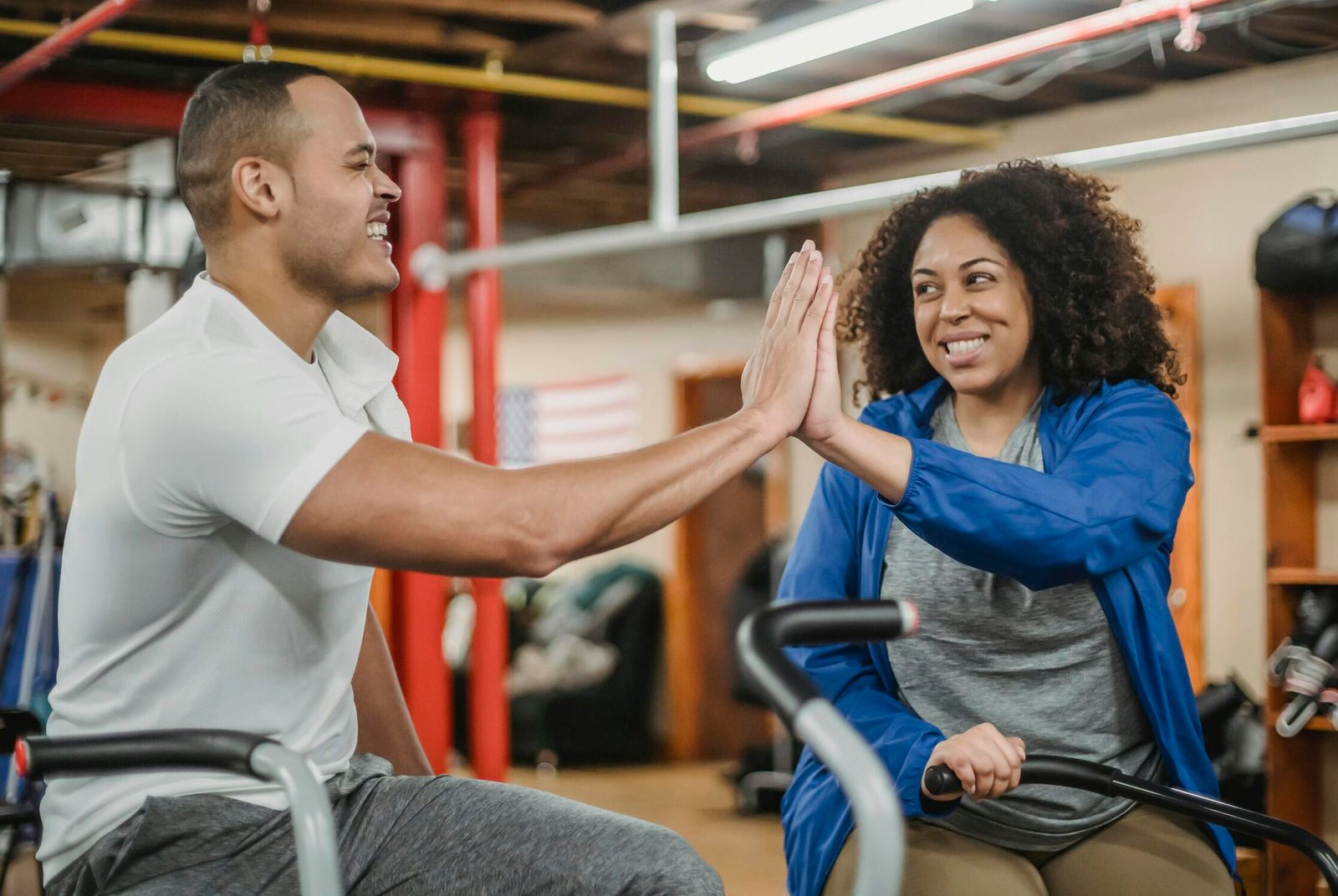
One way is simply by changing what we eat. By staying hydrated, changing the macronutrient composition of our diet, and incorporating exercise into our routine, we can lose weight without necessarily making the whole process complicated and painful. Let’s dive in and break some of these things down.
Why Counting Calories May Not Be The Solution
Counting calories can be time-consuming and stressful. Weighing out every component of every meal and calculating the calorie content of every drink we consume throughout the day can lead to an unhealthy relationship with food.
It’s also easy to get obsessed with “the numbers” and forget about the quality of the diet.
Here’s a few reasons why focusing purely on calorie count may not be the best way to lose weight.
- Not all calories are created equal. 100 calories of fruits and vegetables affects our bodies completely differently from 100 calories of candy.
- It can lead to an unhealthy relationship with food. Obsessing over numbers can cause anxiety, stress, and make us miss the bigger picture.
- It doesn’t teach us anything about nutrition. We might be hitting our calorie goals every day but still be missing out on very important nutrients.
- It can be challenging to maintain long-term, especially when there are social commitments, vacations, or dining out, where weighing food and calculating every calorie is not really practical, or even downright impossible.
While calorie counting is definitely a viable method to lose weight, let’s focus on building habits that fundamentally help us maintain a healthy body weight by using our body’s built-in hunger and fullness signals, and by being generally mindful about what and how much we are eating.
By doing this, you’ll consume an appropriate number of calories without really needing to think about it and experience an overall greater degree of satisfaction with your diet.
1. Mindful Eating
Mindful eating is all about paying attention to your food and to your appetite. It can really be an excellent way to control your weight and your overall health.

Here are some simple steps to help you eat more mindfully.
- Slow down. It’s really important to not rush your meals. Chew your food several times and enjoy it. The real reason this is so important is because it gives your brain and your appetite-regulating hormones time to register hunger and satiety.
- Listen to your body. Don’t eat just because it’s time for a meal and don’t feel compelled to stuff yourself. Paying close attention to your body’s fullness and hunger levels are a great and natural and healthy way to regulate your caloric intake naturally.
- Keep your attention on your food. There have been countless experiments and studies that have shown that being distracted at the time of consuming food can result in overconsumption of calories. It’s important to stay focused on the meal and on how full you’re feeling as you eat.
- Use smaller plates. This is a common trick used in all-you-can-eat buffets to encourage you to eat smaller portions without necessarily feeling like you are. Your plate also looks fuller with less food.
- Engage your senses. This may seem crazy, but take a moment to notice the colors and textures and smells and flavors of your food, which can not only increase satisfaction of the meals that you eat, but also help you eat less.
- Eat when you’re relaxed. Try to avoid eating on the go or while standing, as this can, again, distract you from the amount that you’re eating. Obviously, there will be times that this will not be possible, as we all have busy lives, but in these cases, try to pre-portion the food that you’re carrying with you, which you can completely finish on-the-go, assuming you’re hungry enough.
2. The Importance Of Hydration
Most people drastically underestimate the sheer importance of staying hydrated in the process of losing weight. Hydration is important at all times, but especially during a fat loss phase.

Here are a few reasons why:
- Hydration helps you feel satiated. As humans, we often misinterpret hunger for a craving for water or even salt. Making sure that you’re hydrated with adequate electrolyte intake can go a long way towards curbing your cravings.
- Water can temporarily boost your metabolism. Especially if you drink cold water, drinking water can temporarily help you burn more calories.
- Water supports your body’s overall digestive functions. Hydration is absolutely essential for nutrient absorption, waste removal, and transport of energy throughout your body.
Here are the four most important times to drink water.
- First thing in the morning. You use and lose a lot of water through digestion and water vapor in your breath throughout the night, so make sure you drink a glass of water in the morning to rehydrate your body after sleep.
- At least one glass of water 5-10 minutes before each meal of the day. This really goes a long way in helping control your appetite, and studies have shown that this can reduce the number of calories you consume during each meal.
- Between meals. Try and drink at least one glass of water between every meal of the day, and if you feel hungry or feel like having a snack, make sure you have a glass of water before you start snacking.
- Around exercise. Your body loses a significant amount of fluids through urine, sweat and breathing when your heart rate is elevated. Make sure you’re consuming enough water and electrolytes around these times to maintain hydration levels.
Here are some practical tips for staying hydrated throughout your day.
- Keep a reusable water bottle with you. If you have a water bottle on hand at all times, it really reduces the resistance and drops the barriers to staying hydrated.
- Set reminders to go off every hour or two throughout the day, which will ensure that you are consuming water at regular intervals.
- Break up the monotony of just drinking plain water by adding slices of cucumber, sprigs of mint, or maybe even a few berries to your water bottle.
- Consume water-rich fruits like watermelon and cucumbers
- Indulge in natural herbal teas but watch your additions of sugar, milk or other calorie-rich accompaniments, as these calories can quickly add up.
Here’s a quick and easy way to judge your hydration level. If your urine is pale yellow, you’re doing great. If it’s dark, you definitely need to be drinking more water. The exception to this is if you’ve consumed foods with significant amounts of B vitamins, which can also result in darker urine.
3. Fiber: Your Gut’s Best Friend
Consuming more fiber-rich foods is one of the most effective ways to lose weight without counting calories. Fiber has a whole host of benefits and is an indigestible type of carbohydrate which cannot provide energy to the body. It also plays a crucial role in our gut health, satiety, and therefore our weight loss efforts as well.
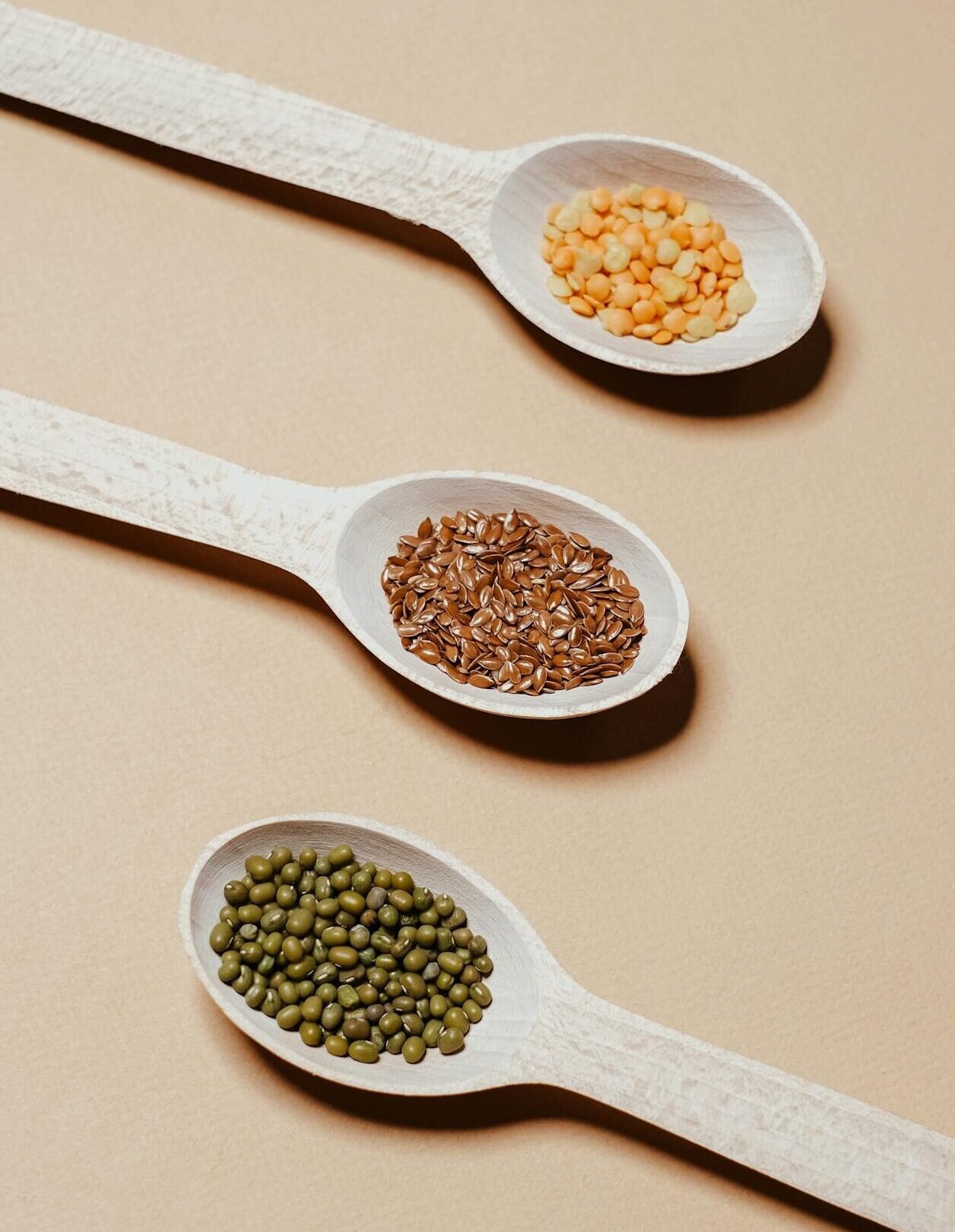
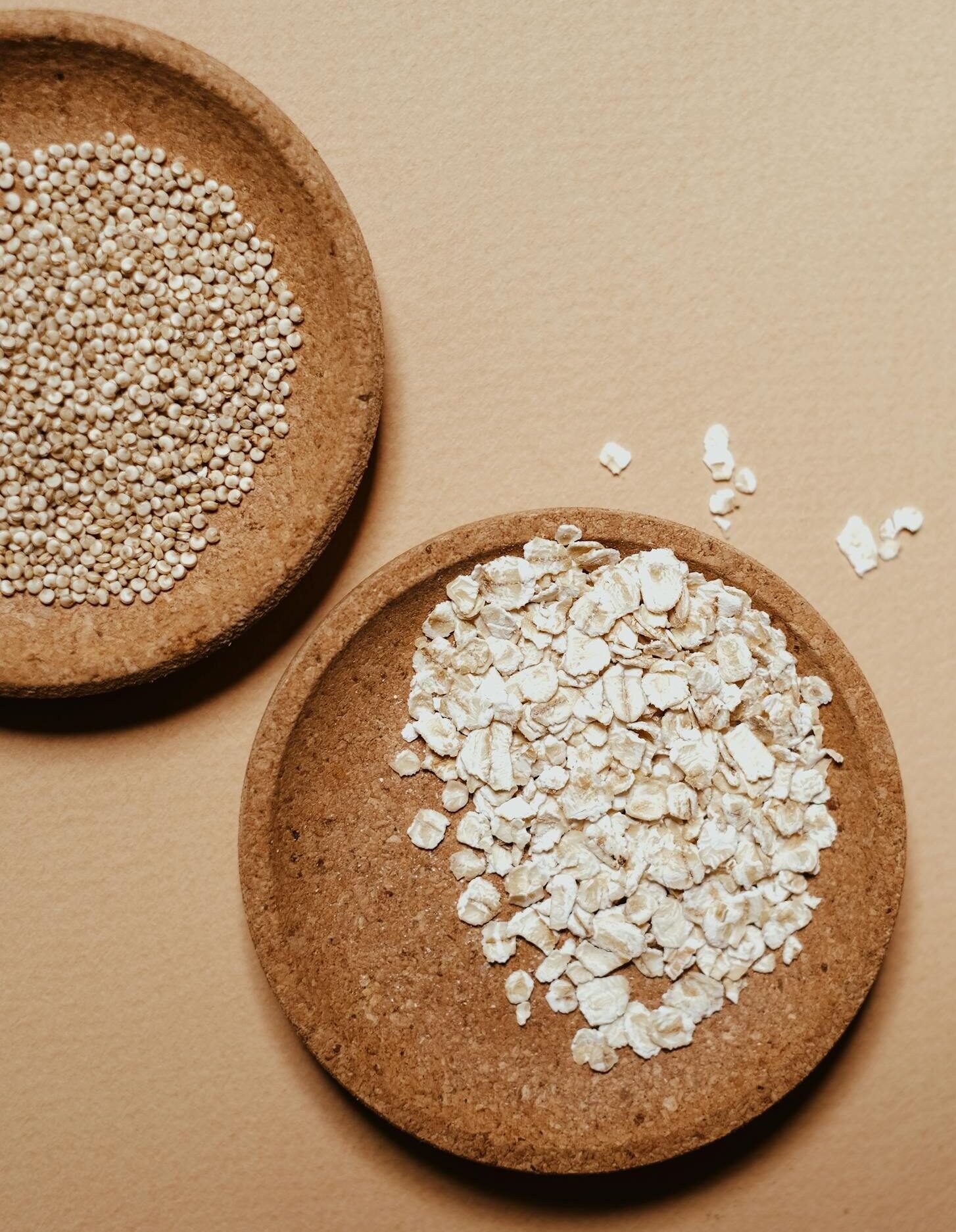
Here’s why it’s so important:
- It keeps you full. Fiber expands in your stomach, which massively boosts fullness, slows digestion, and helps you feel a lot more satiated with a smaller quantity of food.
- It helps with blood sugar regulation. Because of the slower digestion, energy-providing carbohydrates are metabolized a lot slower in the stomach, which results in more stable blood sugar levels and fewer crashes.
- It’s beneficial for gut health. This is a complex topic, but fiber is massively beneficial in a number of ways for your gut microbiome.
- It helps manage cholesterol. Cholesterol regulation is massively beneficial for overall heart health.
Here are some high-fiber foods that you can add to boost your fiber intake.
- Fruits and vegetables. Broccoli, berries, apples, Brussels sprouts, spinach, carrots, pears, and oranges.
- Whole grains. Whole wheat, barley, rye, brown rice, quinoa, and oats.
- Legumes. Beans, lentils, pulses, and peas.
- Nuts and seeds. Chia seeds, flax seeds, pumpkin seeds, almonds, and cashews.
There’s a number of strategies you can employ to ramp up your daily fiber intake.
- Kickstart your day with high-fiber breakfast, such as oatmeal and berries
- Incorporate fiber into your snacks by munching on raw vegetables and hummus, for example.
- Add beans and legumes to soups, salads, or better yet, cook a legume-centric meal, like a hearty stew
- Consuming whole grain bread or whole wheat pasta is a great start, and if you want to take it a step further, substituting whole wheat pasta for chickpea pasta or lentil pasta, can also tremendously boost your fiber intake too.
- Throwing a handful of chia seeds or flax seeds in your yogurt or into your smoothies goes a long way too
If you try to include some fiber-rich foods in most of your meals and snacks of the day, hitting your daily fiber targets is pretty easy. The recommended daily intake is 25 to 30 grams of fiber per day.
However, exceeding this generally does not have adverse effects. It’s just important that you increase your fiber intake gradually, to avoid digestive discomfort, and also ensure that you’re consuming proportionately more water too.
4. Protein: The Satiety Powerhouse
Other than fiber, protein is also extremely important for fat loss. Our body needs protein for repairing muscle and connective tissue within our body among other things, but protein also plays an immense role in boosting our overall satiety.
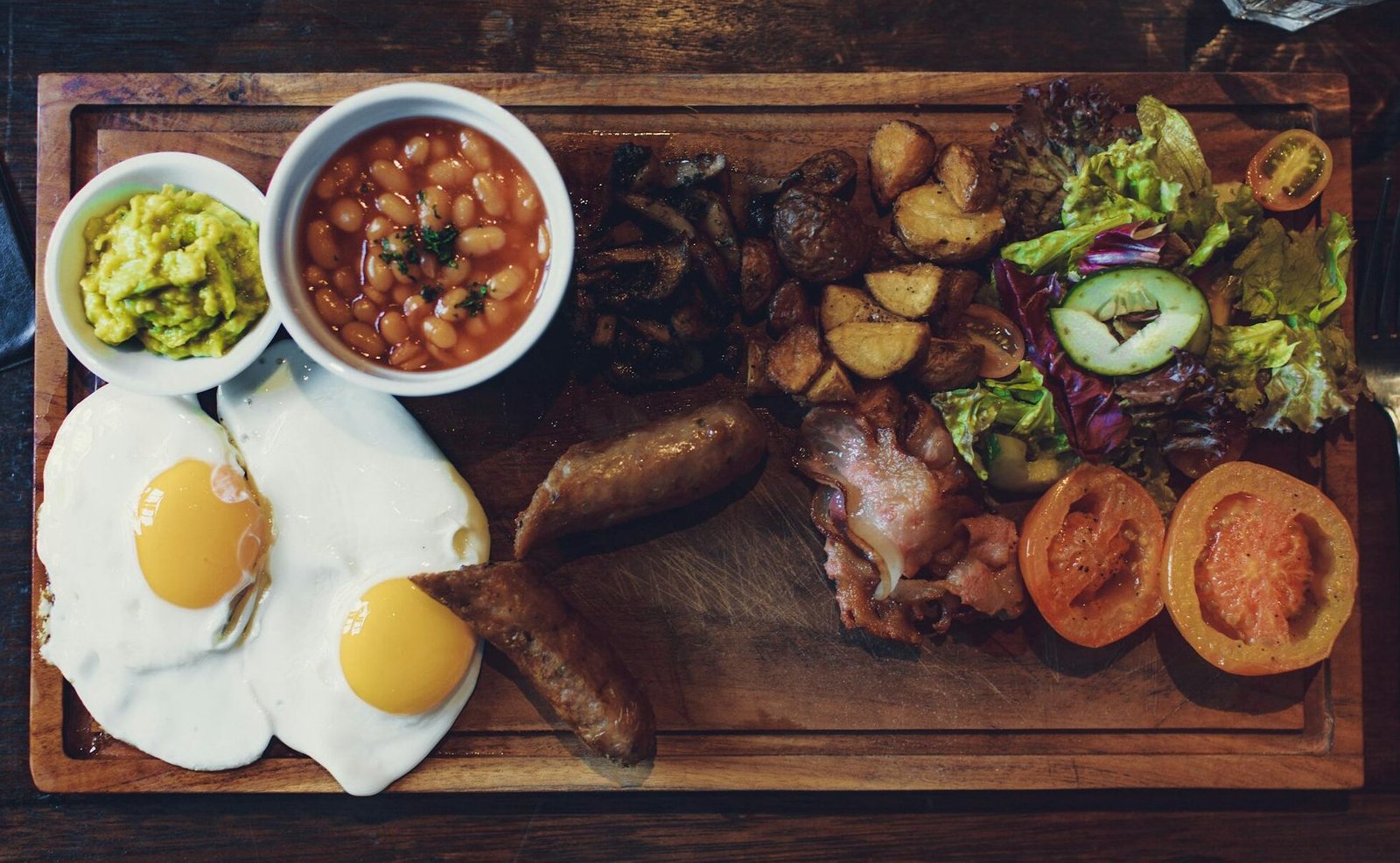
Here are a few benefits:
- It keeps you full. Protein takes longer to digest, which, like fiber, helps increase our overall satiety.
- It helps preserve and repair muscle mass, which is particularly important for our metabolism when we’re losing weight.
- Protein takes more energy to digest. The body prefers to use carbs and fats for energy over protein because digesting protein for energy is a more inefficient process. This results in a much greater energy demand to digest protein for energy rather than for repairing tissues.
- It helps regulate our blood sugar. This results in more stable energy levels, reduces cravings, and helps curb our appetite.
Here are some of the best sources of protein:
- Lean meat – Chicken, lean beef, pork tenderloin, and turkey
- Lean fish – Trout, sardines, tuna, cod, tilapia
- Eggs
- Lower-fat dairy – Greek yogurt, cottage cheese, reduced-fat milk
- Vegan options – Tofu, lentils, beans, tempeh
- Nuts and seeds – Cashews, almonds, chia seeds, pumpkin seeds (watch portion sizes with these, as they are calorie-dense)
Incorporating more protein into your diet involves many of the same techniques as incorporating more fiber into your diet. It’s important to try and include some protein in every meal of the day.
- We mentioned starting breakfast with oatmeal and berries for fiber. Adding Greek yogurt to this is an excellent protein enhancement and makes for a wonderfully balanced breakfast.
- You can also add protein to your salads and to your meals by incorporating chicken into your salad or fish into a pasta dish.
- In between meals, if you have a smoothie as a snack, Greek yogurt and a scoop of protein powder can up the protein content quite a bit.
- For more plant-based protein, you can snack on a few nuts and seeds instead of opting for chips and crackers.
The amount of protein you need in your diet depends on a number of factors such as gender, weight, activity level, and your overall health goals. A good starting point is 0.6 grams of protein per pound of body weight. If you’re doing intense weight lifting and resistance training, you may want to opt for 0.8 grams of protein per pound of body weight. The more you can spread your protein intake throughout your day, the better.
5. Eating More Frequently
Another technique you can use is to eat a greater number of smaller meals. Like many of the techniques discussed already, this approach helps you stabilize blood sugar levels, keeps your metabolism active throughout the day, controls your hunger so that you don’t overeat at any one given meal or snack, improves energy levels, and minimizes crashes.
Related: 7 Healthy Snacking Ideas For A Better You
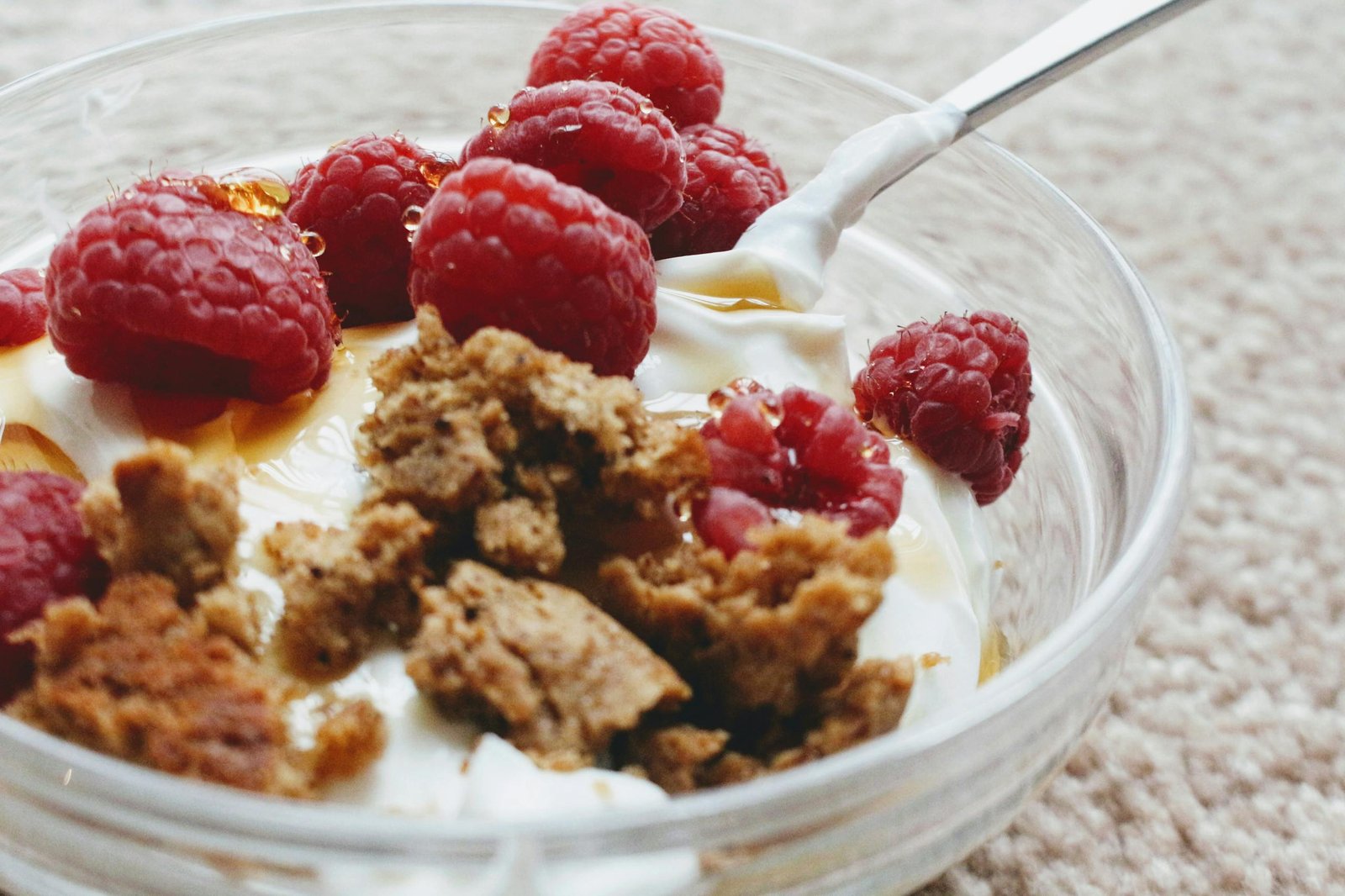
A very simple way to implement this is as shown:
- Breakfast: 8:00 AM
- Snack 1: 10:30 AM
- Lunch: 1:00 PM
- Snack 2: 3:30 PM
- Dinner: 6:00 PM
Again, snacking is not an excuse to overeat, and portion control becomes even more critical when the number of meals in the day increases. All of your meals and snacks should be balanced and include some healthy carbs, protein, healthy fats, and a bit of fiber if possible, too. Focusing on high-quality, whole foods that are also nutrient-dense will really keep your metabolism and appetite in check and enable you to lose weight without needing to obsess over every calorie.
Here are a few tips for implementing this strategy.
- Prepare your meals in advance. This ensures that you’re making the best nutritional choices and helps you avoid suboptimal ones just because you’re short on time or experience a sudden spike of hunger.
- Always keep healthy snacks in stock. You should always make sure to have nuts, yogurt, fruits, and vegetables on hand for easy, nutritious snacks.
- Listen to your body. It’s important that you’re not forcing yourself to eat just because it’s time to eat. If you’re not hungry, it’s perfectly acceptable to skip your snack.
- Hydration. As we discussed earlier, many times we can mistake thirst for hunger.
- Remain flexible. If your schedule changes, make sure you adjust your eating times according to that.
Finally, bear in mind that eating five meals a day may not work for everyone. Some people will indeed prefer three standard meals. The best eating pattern for you is the one that you can stick to.
6. Exercise: The Undeniable Weapon
It’s hard to talk about weight loss without talking about exercise. Exercise is a crucial part of pretty much every weight loss plan, but its benefits go well beyond just burning energy. Regular physical activity has a huge variety of benefits for both mind and body.
Related: Building Muscle: 8 Evidence-Based Benefits
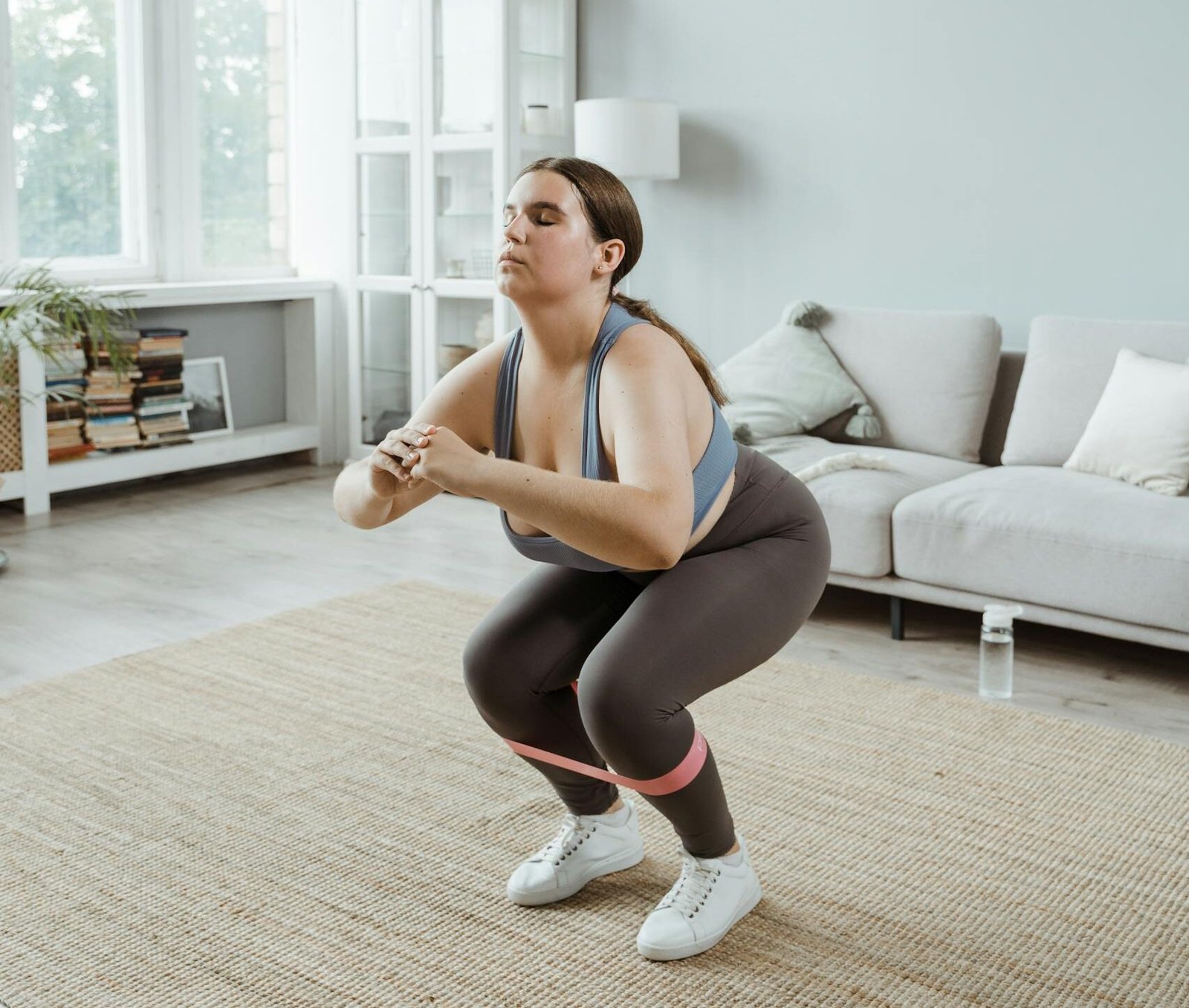
Here are just some of them:
- Appetite control. Contrary to popular belief, regular cardio can increase your sensitivity to your fullness hormone, leptin, which makes you feel fuller without requiring as much food.
- Increased metabolism. Exercises like resistance training can build muscle, which is metabolically active tissue and helps you burn more energy even at rest.
- Stress reduction. Reduced stress means less emotional eating and lower levels of cortisol, which also contributes to less abdominal fat, improved insulin sensitivity, and better appetite control.
- Better sleep. The impact of sleep on weight loss is grossly underestimated. Seven to nine hours of quality sleep is absolutely essential for both weight management, repair and recovery of muscle tissue, healthy cortisol levels and overall health.
- Improved mood. It’s a well-known fact that exercise is responsible for releasing endorphins within the body, which are our bodies’ natural antidepressants.
- Improved fat metabolism. Regular exercise, especially cardio, can force your body to use fat for fuel rather than just rely solely on carbs. This has further benefits in improving your metabolic flexibility as well. There’s also the benefit of increased insulin sensitivity too.
Some types of exercise you should consider:
- Cardiovascular exercise. Activities that qualify as cardio include jogging, swimming, dancing, cycling, and playing sports like basketball and soccer. If you have joint pain, you may want to stick to lower impact activities such as swimming and cycling. If you can squeeze in 150 minutes of moderate intensity cardio each week, you’re already well on your way to a healthier body and a healthier mind.
- Strength training. This is highly recommended for everyone. Building muscle will not only help improve your metabolism, but if you’re over the age of 30, as your body begins to lose muscle mass over the years, resistance training is tremendously helpful in maintaining and increasing muscle mass so that you don’t lose functional strength and mobility as you age. You can also try calisthenics and resistance band workouts if you like to switch it up.
- HIIT (high intensity interval training) or LISS (low intensity steady state). HIIT involves intense exercise followed by short rest periods. It’s great for burning calories and for burning fat in the short term, but can be high-impact and more hunger-inducing as well. If this kind of exercise is not really feasible for you, feel free to try LISS. LISS activities include walking uphill on a treadmill, for example. This will still result in good calorie burn while being much gentler on your joints and being less hunger-inducing.
- Yoga. While yoga may not necessarily be “cardio”, yoga can improve flexibility, help you in managing stress, and promote mindfulness too, all of which can be beneficial for your cortisol levels and your metabolism.
Adding exercise to your life
Here are some tips on how you can incorporate exercise into your routine in an approachable and manageable way.
- Start small. Choose any activity that you like and try to spend at least 10-15 minutes every day and gradually increase that over time.
- Focus on activities and sports that you enjoy, whether that’s walking, dancing, swimming, playing sports, or lifting weights.
- Create a routine. If you can find time every day to exercise, or even every second day, establishing a repeatable pattern that works for you is going to make long-term weight loss way more sustainable.
- Mix it up for variety. If you exercise three to four times a week during dedicated windows, try and mix cardio and strength training to get the best of both worlds.
- Use each and every opportunity that you can find to move every day. This tip is vastly underrated because taking the stairs, parking further away, doing squats while you’re watching TV, taking an extra long walk with the dog, or even buying a standing desk so that you’re not sitting while you work are all excellent ways to boost your daily calorie burn without it costing you time.
- Get a friend to join you on your journey. This can not only keep you more accountable, but also make your workouts a lot more entertaining.
- Track your progress. Whether you use an app or a journal, make sure you’re tracking the general trend of your weight when you weigh yourself every morning, or even tracking your best time to run a mile or the number of reps you can lift a certain amount of weight.
Don’t underestimate the cumulative power of a number of small changes. Small, repeatable, consistent action beats perfection every single time. And the best part is that consistency is the real secret to success.
Putting it all together
Let’s now try and tie everything we’ve talked about together so that you can incorporate all of it into a comprehensive plan to kickstart your weight loss journey. As you optimize your diet for protein and fiber and choose your favorite fruits and veggies, go here to quickly and easily find all kinds of useful nutritional information about almost any food!
- Supercharge your mornings:
- Drink a glass of water
- Eat a protein and fiber-rich breakfast
- Do a little bit of light stretching or go for a quick jog
- Prioritize hydration:
- Carry a water bottle with you
- Drink water before every single meal
- Set reminders to drink water regularly
- Enjoy a little bit of whole fruit in your water to switch things up
- Make sure your meals are balanced:
- Eat at home to control the calories and macros
- Include protein, fiber, and fat in every meal
- Have healthy snacks in stock
- Practice mindful eating:
- Eat slowly while sitting down and without distractions
- Focus on the sensory experience of eating your food
- Don’t force yourself to eat or to snack if you’re not hungry, and don’t stuff yourself
- Move:
- Try to aim for 20 to 30 minutes of exercise every day if you can
- Try and incorporate walking into your lifestyle as much as possible
- Find activities or sports that you enjoy, especially if you can bring a friend along and make those part of your routine
- Don’t skimp on sleep:
- Try and create a relaxing, repeatable bedtime routine at the same time every night if possible
- Aim for seven to nine hours of high-quality sleep each night
- Keep your stress in check:
- Add yoga or meditation into the mix to promote relaxation and mindfulness
- Spend time with friends or even journal if that helps you cope with stress
- Make sure you spend some time doing the things you enjoy
- Track your progress:
- Make sure you’re tracking your weight to see the progress that you’re making
- Use apps to track your jogging or cycling speed or even your strength gains in the gym
- Make sure you celebrate other victories like increased energy levels
- Optimize your environment:
- Replace all unhealthy junk foods in your home with healthy alternatives like fruits and veggies and hummus and yogurt
- Surround yourself with supportive, motivated people who have goals aligned with yours
- Be patient and, most importantly, be consistent:
- You will have the odd setback, but don’t let that faze you. You’re human.
- Keep reminding yourself that, again, consistency beats perfection
- Focus on the process rather than the outcome, and the results will come
- Remind yourself that sustainable, long-lasting weight loss always takes time
Conclusion
Remember that to lose weight, you don’t necessarily need to count every single calorie or follow some super strict fad diet. If you have a healthy relationship with food and focus on holistic health, such as exercising regularly, staying hydrated, eating whole, nutrient-dense foods, weight loss will be a natural byproduct of a healthier lifestyle overall. It may take a little bit extra time to hit your weight loss goals, however, slower and more consistent weight loss is always more sustainable than its extreme counterpart.

On your journey, it’s also worth remembering that you’re human, you will make some mistakes, and you do need to be patient with yourself. Celebrate any progress that you make and try to enjoy the process of becoming healthier. Here are some final lessons to remember as you embark on your journey.
- Focus on health and nutrition and don’t fixate on your weight. If you do this, you will likely experience improvements in energy levels and mood, and weight loss will simply be a part of those benefits.
- Allow yourself a little bit of flexibility. There will be times that you have an unexpected dinner out or you’re not able to sit down and focus on your food or you’re not able to get all your steps in for the day, but that’s okay. As long as you’re staying consistent most of the time, these outliers will really not affect your progress meaningfully.
- Stay away from extreme diets. Nutrition science is always evolving and there’s always a new diet around the corner. Don’t let yourself get caught up in the shiny object syndrome, chasing the latest and the greatest, and instead, focus on the basics and try and get those right.
- Listen to your body. When it comes to eating three meals a day or five meals a day, exercising three times or five times a week, everyone is different and there is no one-size-fits-all.
- Share your goals with others. Joining classes at your local gym or working with a dietitian to get personalized advice can help you keep be more accountable.
- Make sure you have a long-term perspective. The goal isn’t just to lose weight, but it’s to maintain a healthy lifestyle that will serve you well in the long term.
Building a healthy lifestyle isn’t easy, but every long journey starts with the smallest of steps. Take this journey one bite at a time and one step at a time. That could mean just drinking an extra glass of water today, and trying to go for a 15-minute walk tomorrow, or doing a few minutes of yoga.
Each positive choice adds to the last and brings you closer. The result of all your hard work is more energy, improved biomarkers, an increased level of confidence from taking your health into your own hands, and not just a longer life, but a higher quality one. Start implementing small changes one at a time and watch yourself transform into a new person. Believe in yourself, stay consistent, and enjoy the journey. You’ve got this.


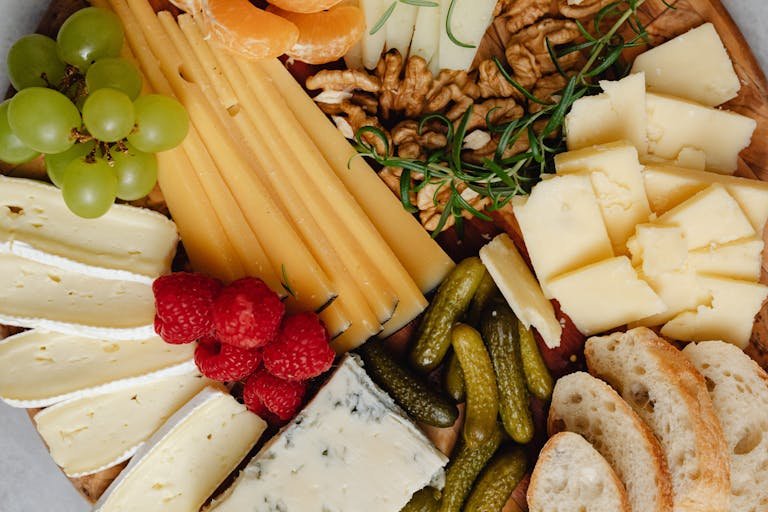
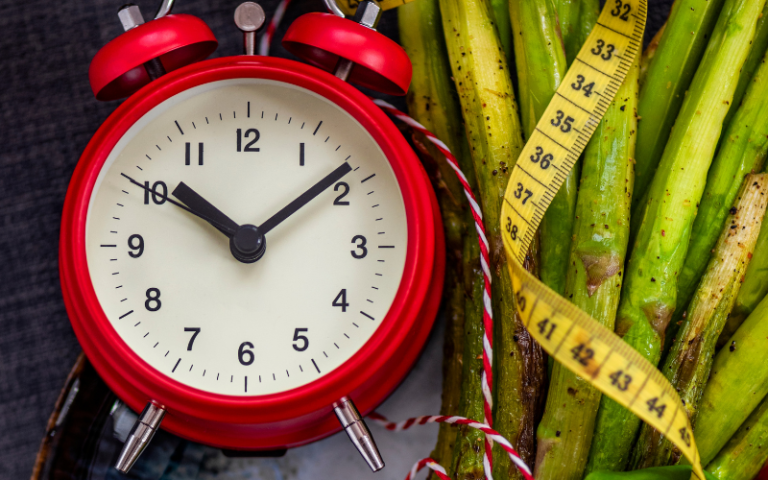
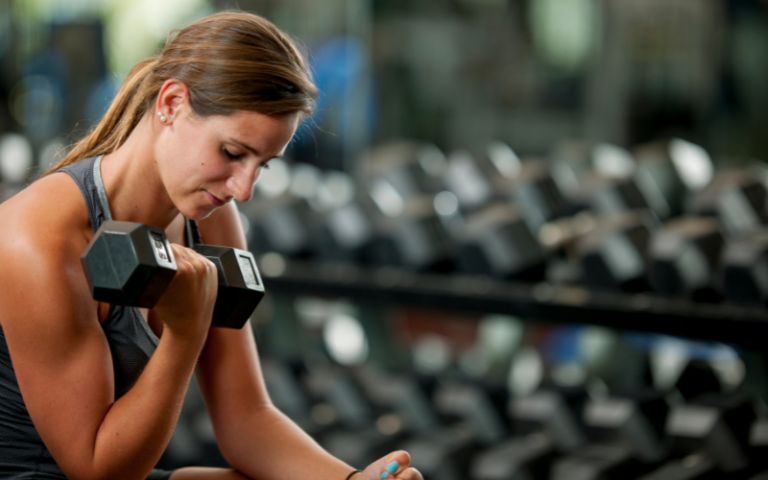
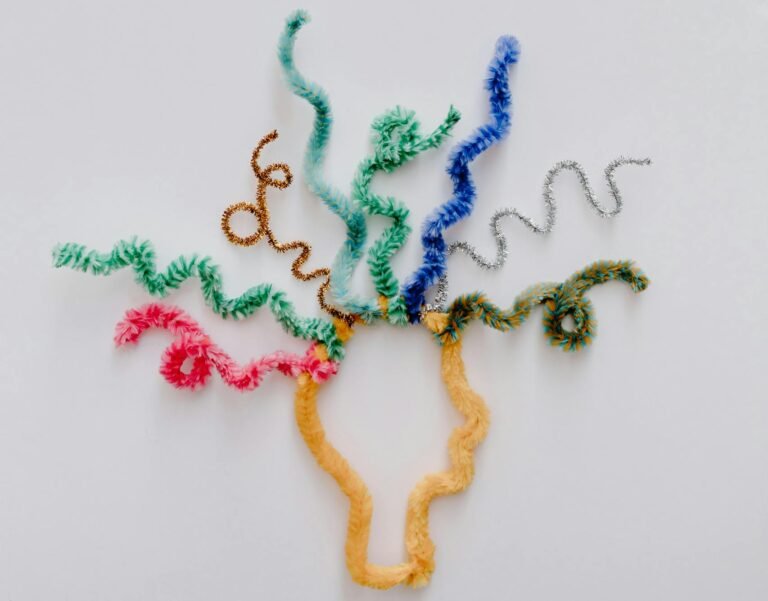

2 Comments